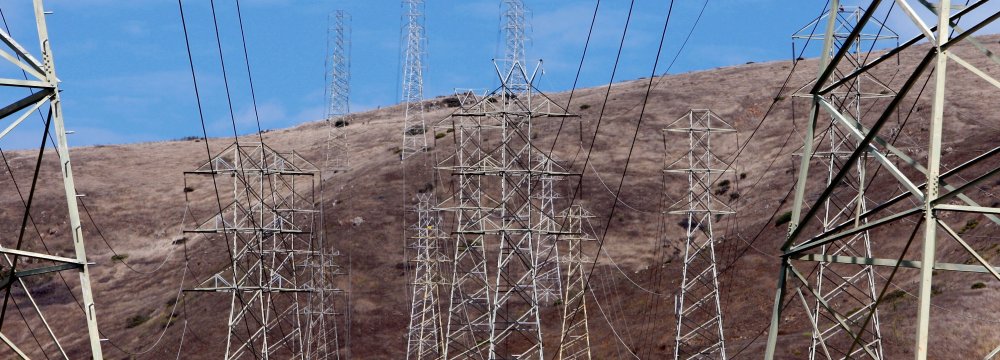Close to 2,000 megawatts energy in new installed power capacity will be added to the national grid this month to help avoid possible blackouts during summer, said Mohsen Tarztalab, managing director of Iran’s Thermal Power Plants Holding Company (TPPHC).
“This new capacity will be added to the grid instantly. Currently, 1,600 MW capacity is ready for launch and the rest will be developed in two weeks,” Tarztalab was quoted as saying by ISNA.
The Energy Ministry has forecast electricity demand to reach 56,000 megawatts this summer, up from a record-high of 52,000 MW in the previous fiscal that ended in March.
According to Tarztalab, installed power generating capacity is planned to rise by 4,000 MW by March 2018. Measures, such as raising electricity charges, can and should help reduce the high and growing energy consumption, he said.
“It is customary in many countries to control and curb power consumption via higher tariffs,” the official said, noting that tariff policy reform is crucial to bridge the gap between what consumers pay and the production cost of electricity.
“By the end of the sixth five-year development plan (2017-22), total power generation capacity should increase by 26,000 MW, of which 19,000 MW should come from thermal power,” he said, adding that as per plans, 5,000 MW will be added to the national power grid annually.
Nonetheless, according to the official, constructing a 1,000 MW thermal power plant “requires 25 trillion rials (more than $650 million) in investment which is simply not economical”.
Experts say more effective steps also must be taken to meet the probable power shortage challenges, one of which is enhancing the efficiency of power plants.
Based on a report by the Majlis Research Center, the Energy Ministry boosted efficiency in thermal power plants by 1% over the past four years, which resulted in saving 6.1 billion cubic meters of natural gas as feedstock in fiscal 2016-17.
Experts say that converting steam power stations as well as gas-powered units to combined-cycle plants should be given higher priority in plans to rehabilitate ageing power infrastructure.
Besides constructing new power plants, the government is pushing with measures to convert conventional plants into efficient combined-cycle units that use both gas and steam turbines to produce up to 50% more electricity.
According to the TPPHC chief, “Iran’s electricity production is at an acceptable level and there is no need to further raise output substantially because consumption in winter is nearly half of summer. If production rises, despite the high investments, huge amount of power will be wasted in non-peak hours as it cannot be saved.”
According to Tarztalab, the government has approved plans for several combined-cycle power projects, worth over $2.7 billion, through foreign funding.
The official acknowledged that power projects are facing funding issues. “We need to recondition some of the aging power plants, but our biggest problem is funding.”
Source: Financial Tribune

